Abstract
Common chromosomal fragile sites appear to be ubiquitous in humans and other mammals, and, although the molecular basis and function of these sites remain an enigma, it has been speculated that they may be a cytogenetic expression of gene activity. A population survey of 28 twin pairs was conducted to assess the heritability of common fragile-site expression. Our data yielded a heritability estimate of .88 for total site expression, suggesting that these sites may result from some common process that is under relatively stringent genetic control. An analysis of the expression of individual autosomal sites revealed that expression on both homologues in the same cell occurred more frequently than expected.
Full text
PDF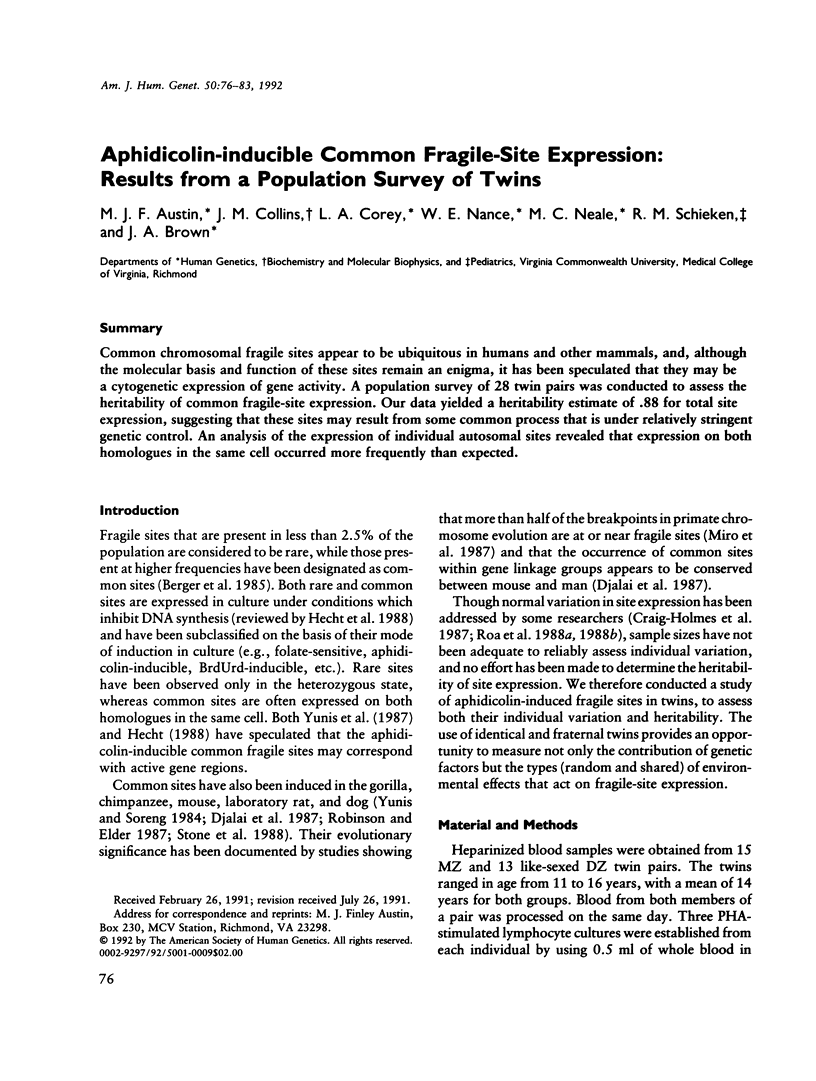
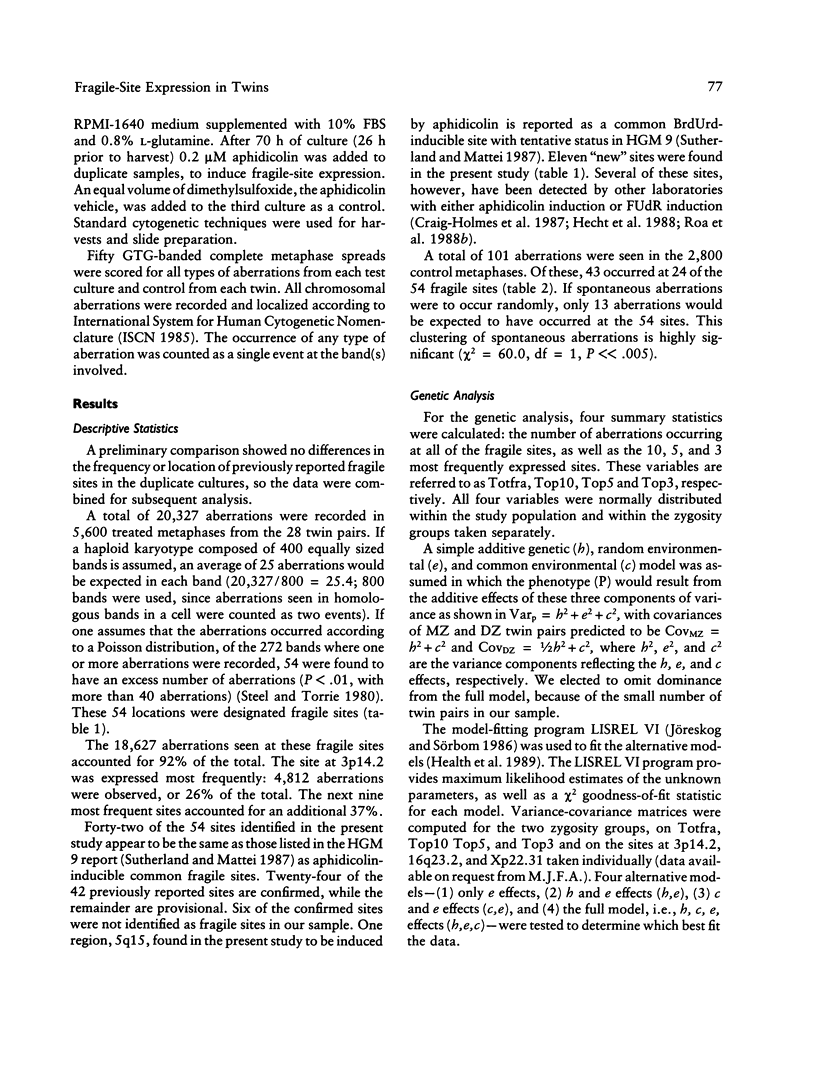
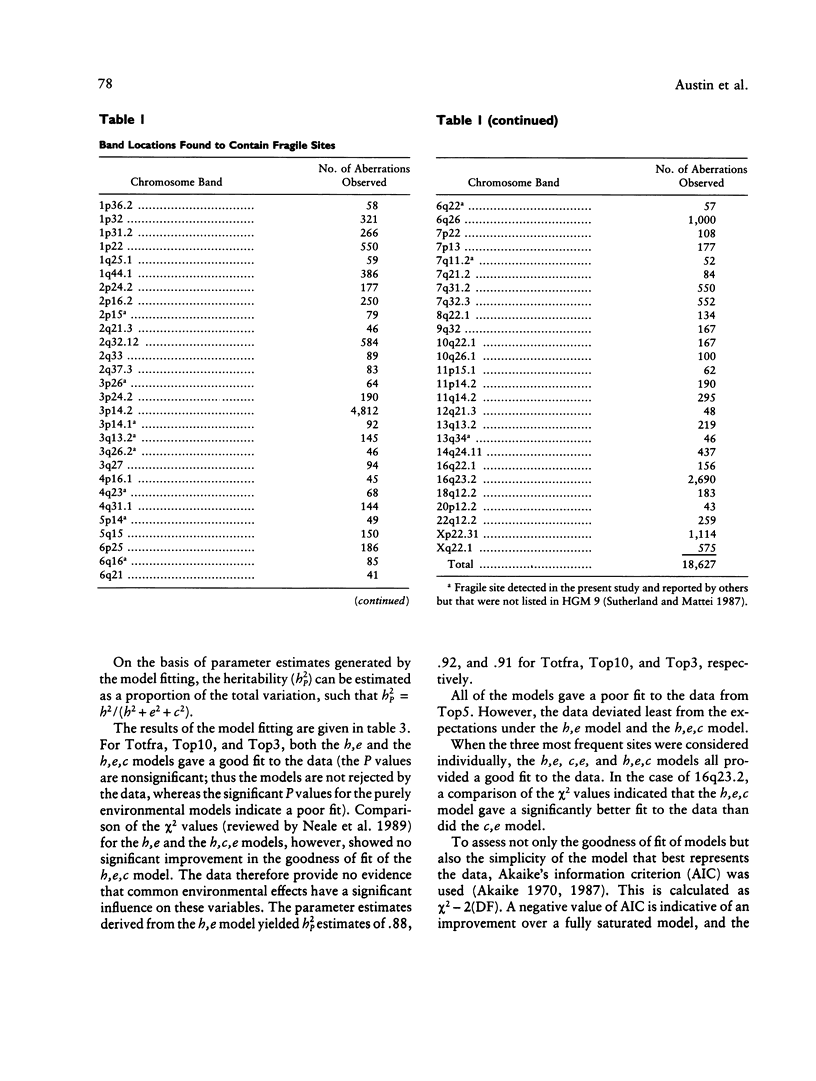
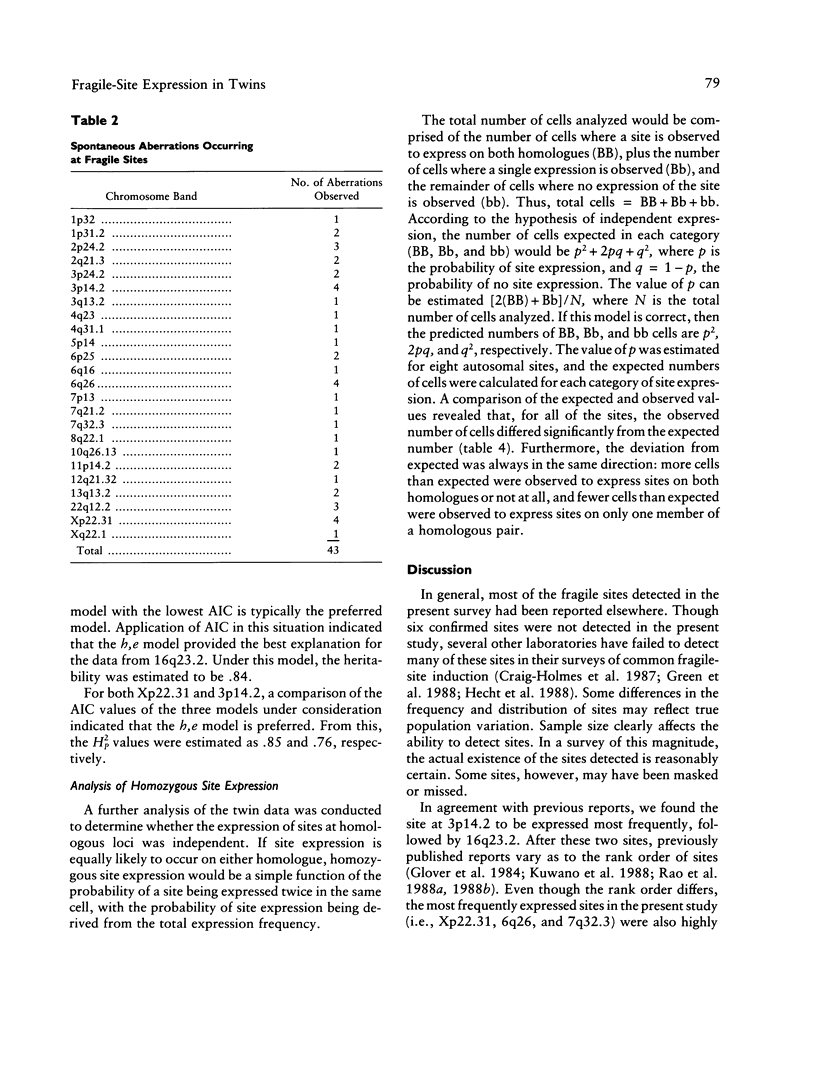
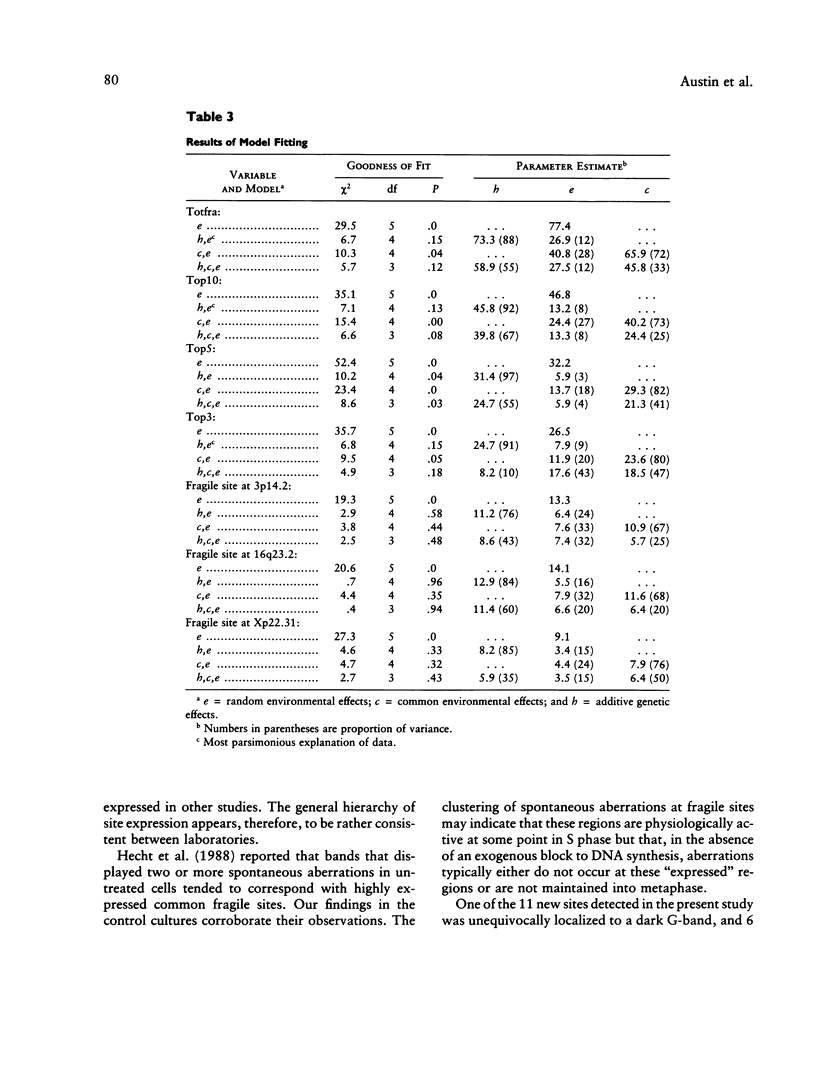
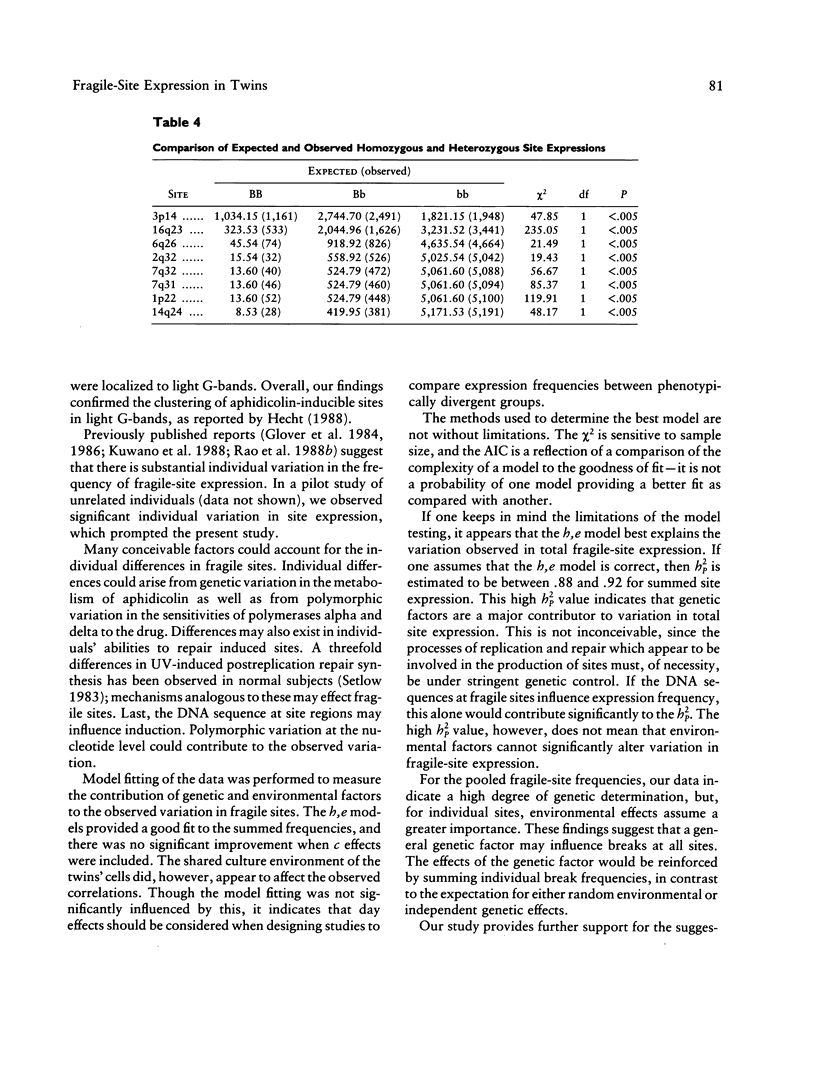
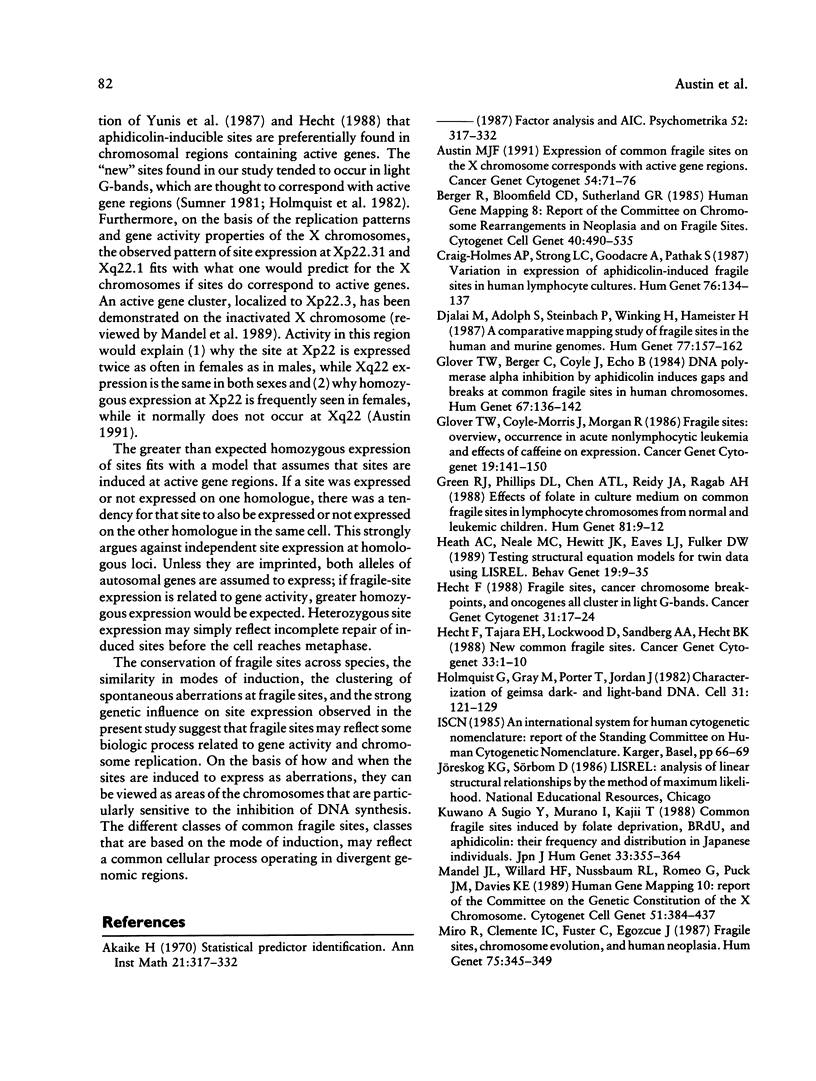
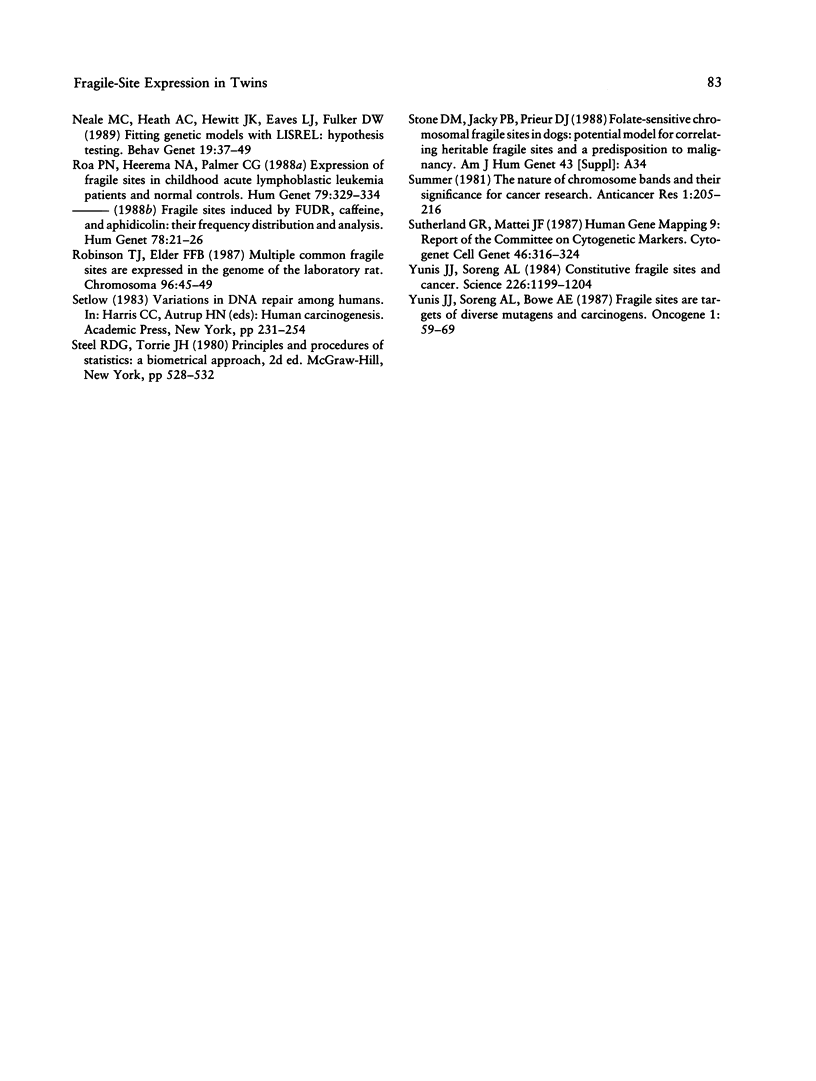
Selected References
These references are in PubMed. This may not be the complete list of references from this article.
- Austin M. J. Expression of common fragile sites on the X chromosome corresponds with active gene regions. Cancer Genet Cytogenet. 1991 Jul 1;54(1):71–76. doi: 10.1016/0165-4608(91)90032-p. [DOI] [PubMed] [Google Scholar]
- Berger R., Bloomfield C. D., Sutherland G. R. Report of the Committee on Chromosome Rearrangements in Neoplasia and on Fragile Sites. Cytogenet Cell Genet. 1985;40(1-4):490–535. doi: 10.1159/000132181. [DOI] [PubMed] [Google Scholar]
- Craig-Holmes A. P., Strong L. C., Goodacre A., Pathak S. Variation in the expression of aphidicolin-induced fragile sites in human lymphocyte cultures. Hum Genet. 1987 Jun;76(2):134–137. doi: 10.1007/BF00284909. [DOI] [PubMed] [Google Scholar]
- Djalali M., Adolph S., Steinbach P., Winking H., Hameister H. A comparative mapping study of fragile sites in the human and murine genomes. Hum Genet. 1987 Oct;77(2):157–162. doi: 10.1007/BF00272384. [DOI] [PubMed] [Google Scholar]
- Glover T. W., Berger C., Coyle J., Echo B. DNA polymerase alpha inhibition by aphidicolin induces gaps and breaks at common fragile sites in human chromosomes. Hum Genet. 1984;67(2):136–142. doi: 10.1007/BF00272988. [DOI] [PubMed] [Google Scholar]
- Glover T. W., Coyle-Morris J., Morgan R. Fragile sites: overview, occurrence in acute nonlymphocytic leukemia and effects of caffeine on expression. Cancer Genet Cytogenet. 1986 Jan 1;19(1-2):141–150. doi: 10.1016/0165-4608(86)90381-x. [DOI] [PubMed] [Google Scholar]
- Green R. J., Phillips D. L., Chen A. T., Reidy J. A., Ragab A. H. Effects of folate in culture medium on common fragile sites in lymphocyte chromosomes from normal and leukemic children. Hum Genet. 1988 Dec;81(1):9–12. doi: 10.1007/BF00283720. [DOI] [PubMed] [Google Scholar]
- Heath A. C., Neale M. C., Hewitt J. K., Eaves L. J., Fulker D. W. Testing structural equation models for twin data using LISREL. Behav Genet. 1989 Jan;19(1):9–35. doi: 10.1007/BF01065881. [DOI] [PubMed] [Google Scholar]
- Hecht F. Fragile sites, cancer chromosome breakpoints, and oncogenes all cluster in light G bands. Cancer Genet Cytogenet. 1988 Mar;31(1):17–24. doi: 10.1016/0165-4608(88)90005-2. [DOI] [PubMed] [Google Scholar]
- Hecht F., Tajara E. H., Lockwood D., Sandberg A. A., Hecht B. K. New common fragile sites. Cancer Genet Cytogenet. 1988 Jul 1;33(1):1–9. doi: 10.1016/0165-4608(88)90042-8. [DOI] [PubMed] [Google Scholar]
- Holmquist G., Gray M., Porter T., Jordan J. Characterization of Giemsa dark- and light-band DNA. Cell. 1982 Nov;31(1):121–129. doi: 10.1016/0092-8674(82)90411-1. [DOI] [PubMed] [Google Scholar]
- Kuwano A., Sugio Y., Murano I., Kajii T. Common fragile sites induced by folate deprivation, BrdU and aphidicolin: their frequency and distribution in Japanese individuals. Jinrui Idengaku Zasshi. 1988 Sep;33(3):355–364. doi: 10.1007/BF02032866. [DOI] [PubMed] [Google Scholar]
- Mandel J. L., Willard H. F., Nussbaum R. L., Romeo G., Puck J. M., Davies K. E. Report of the committee on the genetic constitution of the X chromosome. Cytogenet Cell Genet. 1989;51(1-4):384–437. doi: 10.1159/000132801. [DOI] [PubMed] [Google Scholar]
- Miró R., Clemente I. C., Fuster C., Egozcue J. Fragile sites, chromosome evolution, and human neoplasia. Hum Genet. 1987 Apr;75(4):345–349. doi: 10.1007/BF00284105. [DOI] [PubMed] [Google Scholar]
- Neale M. C., Heath A. C., Hewitt J. K., Eaves L. J., Fulker D. W. Fitting genetic models with LISREL: hypothesis testing. Behav Genet. 1989 Jan;19(1):37–49. doi: 10.1007/BF01065882. [DOI] [PubMed] [Google Scholar]
- Rao P. N., Heerema N. A., Palmer C. G. Expression of fragile sites in childhood acute lymphoblastic leukemia patients and normal controls. Hum Genet. 1988 Aug;79(4):329–334. doi: 10.1007/BF00282170. [DOI] [PubMed] [Google Scholar]
- Robinson T. J., Elder F. F. Multiple common fragile sites are expressed in the genome of the laboratory rat. Chromosoma. 1987;96(1):45–49. doi: 10.1007/BF00285882. [DOI] [PubMed] [Google Scholar]
- Sutherland G. R., Mattei J. F. Report of the committee on cytogenetic markers. Cytogenet Cell Genet. 1987;46(1-4):316–324. doi: 10.1159/000132482. [DOI] [PubMed] [Google Scholar]
- Yunis J. J., Soreng A. L., Bowe A. E. Fragile sites are targets of diverse mutagens and carcinogens. Oncogene. 1987 Mar;1(1):59–69. [PubMed] [Google Scholar]
- Yunis J. J., Soreng A. L. Constitutive fragile sites and cancer. Science. 1984 Dec 7;226(4679):1199–1204. doi: 10.1126/science.6239375. [DOI] [PubMed] [Google Scholar]


